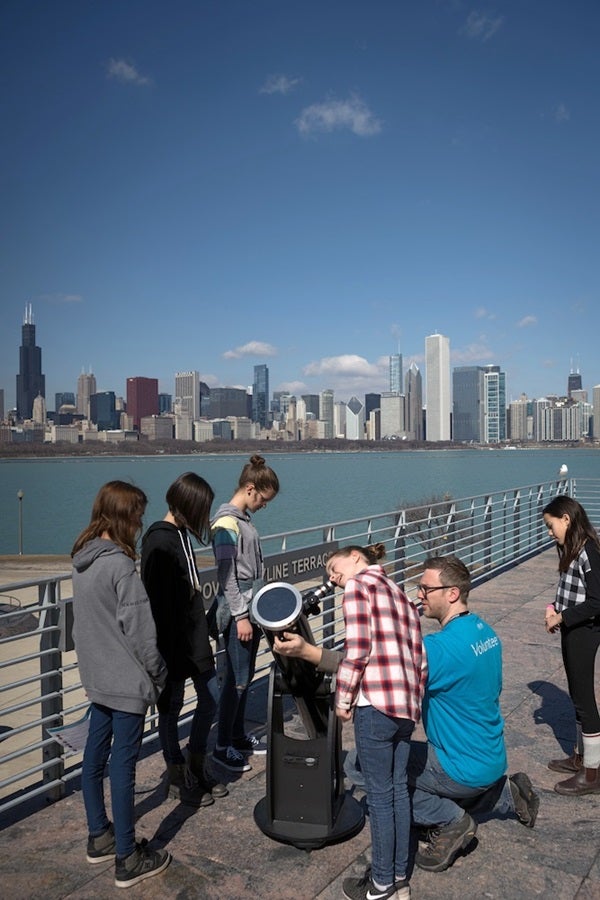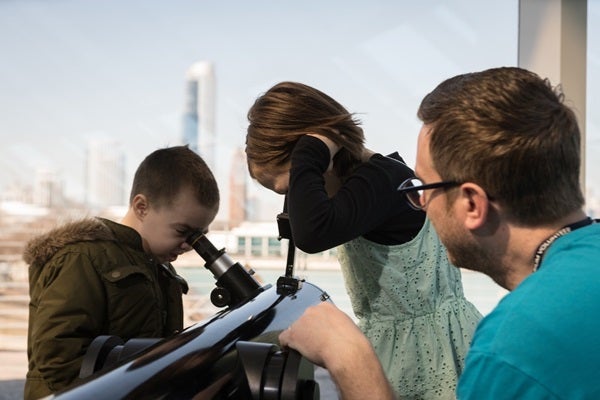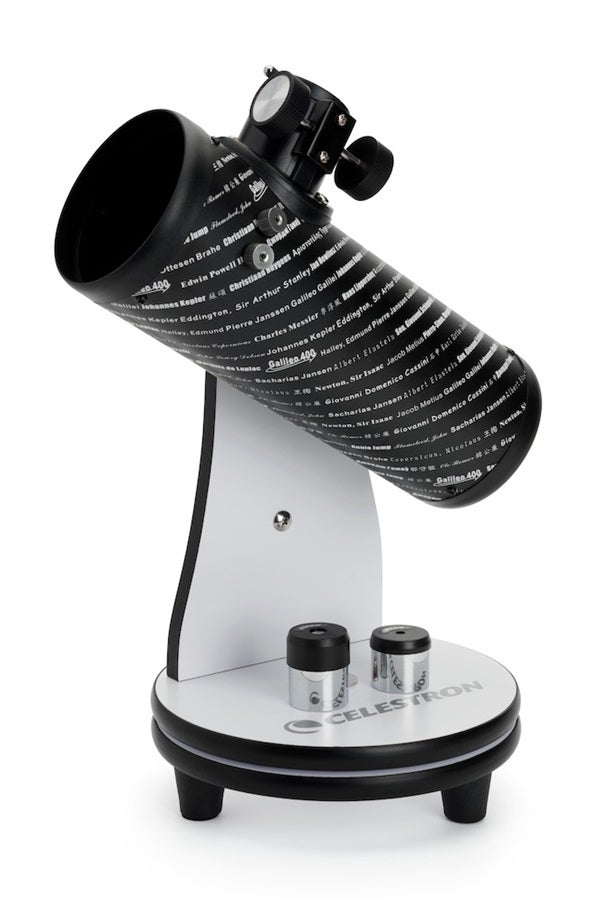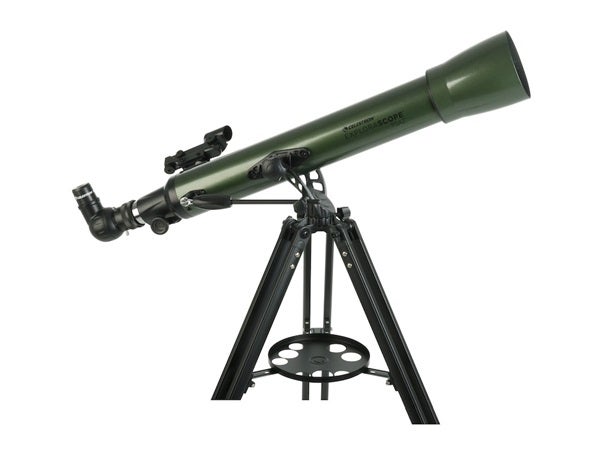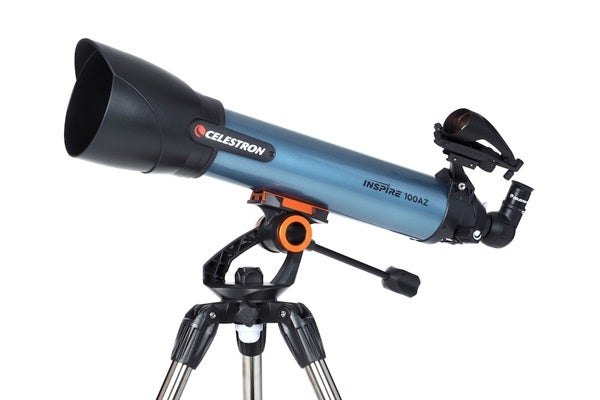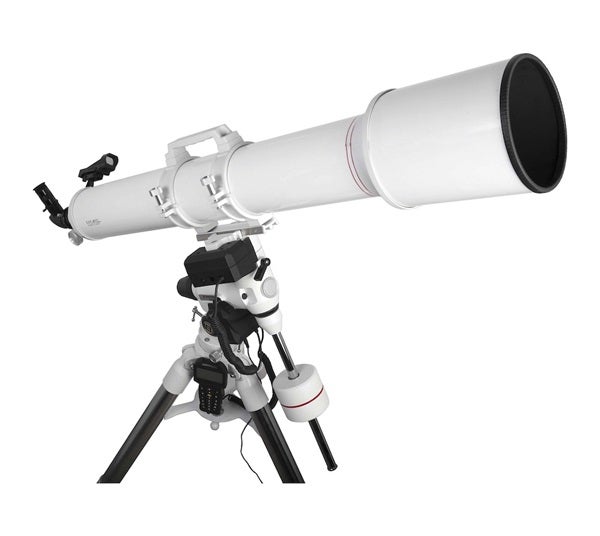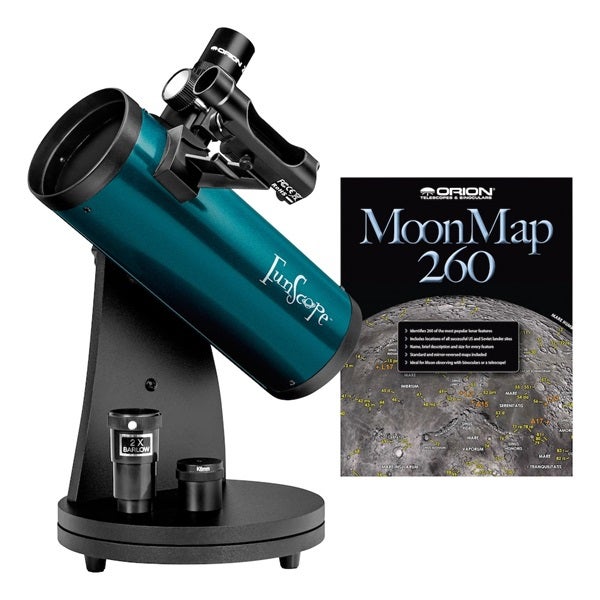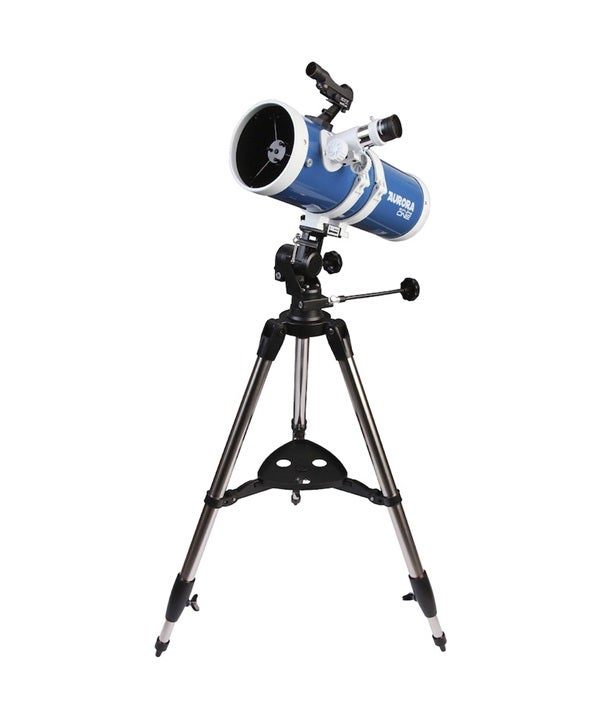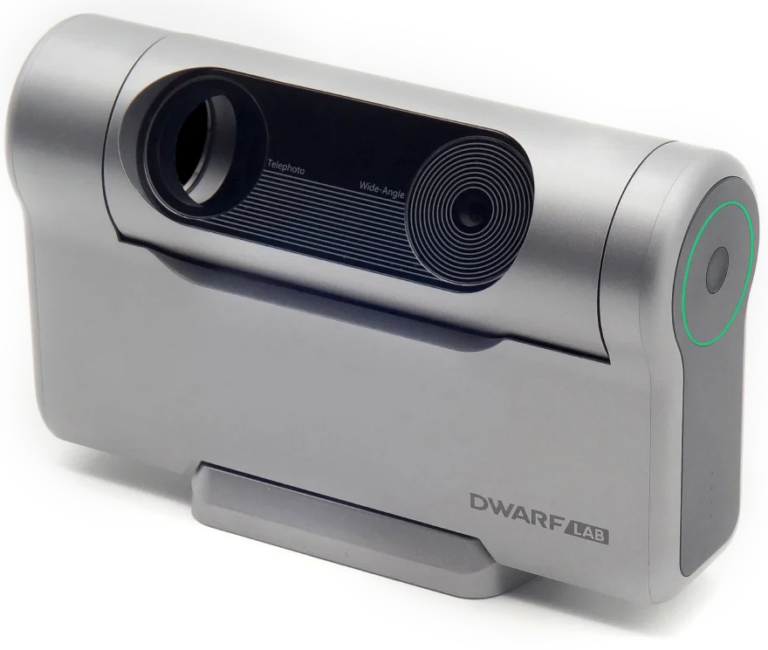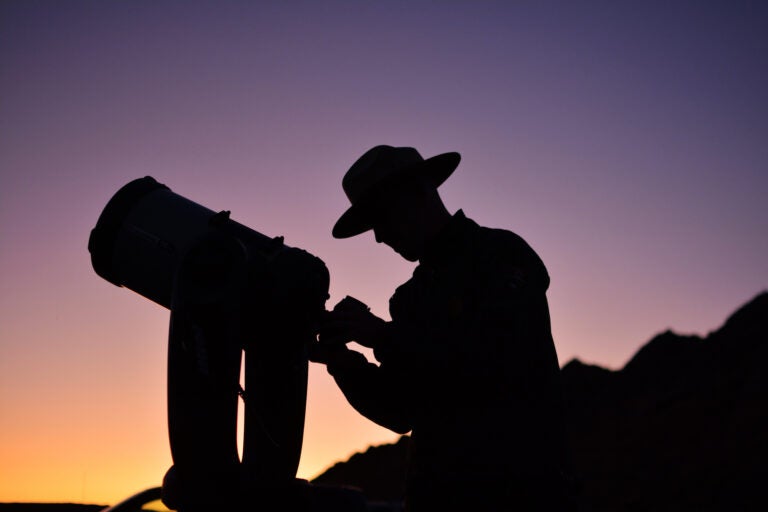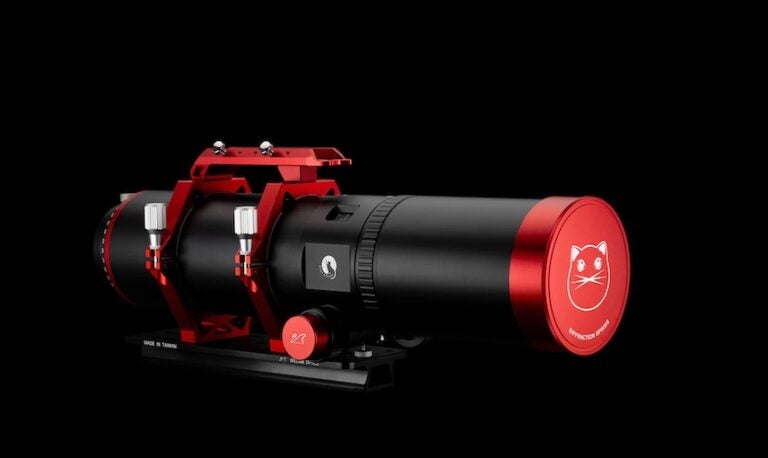My interest in astronomy began in third grade, when my parents bought me a set of constellation flash cards. We couldn’t afford a telescope, but I was able to borrow a neighbor’s small refractor from time to time, and whenever I could get my hands on it, I would spend hours exploring the night sky.
Back in the ’60s, the Milky Way and its many wonders were easy to spot from my backyard even though I lived in a small city. In high school, I joined an amateur astronomy club and viewed through a borrowed 10-inch reflector many times. It wasn’t until I was graduated from college that I finally owned my own scope. But my case is unusual — most amateur astronomers I know owned their own small telescope when they were young.
I can’t say that buying your child a telescope will make them an amateur astronomer. But even if it doesn’t, it will help ignite a spark of curiosity that may bloom into a science-loving flame. And who knows where that will lead?
Baby steps
When you set up your child’s scope, be prepared, as excited kids will touch anything new and might even grab the scope to help steady themselves. Fortunately, all the scopes I list here can take mild handling. And once you’ve bought a scope, remember it’s their telescope. The best thing you can do is stand back and let them explore the night sky.
One thing I’ve learned during my years in the planetarium field is that when you’re at the scope with a child, go easy on the numbers. It may fascinate you that Jupiter is large enough to hold 1,300 Earths and is only one-thousandth the size of the Sun, but numbers like that can quickly overwhelm a child. It is important to get the facts straight, but don’t lose sight of the ultimate objective. You’re not trying to give them a total grasp of astronomy; rather, you’re trying to excite their imagination and get them interested. Questions will come, and you can answer those in as much detail as you perceive your child can handle. If they want more, be prepared to hand them a book (or a copy of Astronomy magazine), or suggest an age-appropriate website.
What to look at
As amateur astronomers, we love to test ourselves: “What’s the faintest object I can see tonight?” “How many craterlets can I count in Clavius Crater?” “Does that 11th-magnitude galaxy have two or three arms?” When you’re showing a child the sky, however, it’s the bright stuff that matters. And that means the Moon. Start with an eyepiece whose field of view will show our whole satellite. (Since the Moon is so brilliant, you may want to invest in a neutral density filter or create an aperture mask).
Ask your child what’s most interesting to them. Then, increase the magnification to zoom in on that area. Go back the next clear night and explain why the Moon looks different. Most important, let your child decide how long each observing session lasts.
Staying in the solar system, Saturn and Jupiter can’t be beat. Through a small scope, however, Saturn’s rings will be tiny. You can increase the magnification, but that will reduce the time the planet remains in view. Luckily, kids’ eyes are much better than those of most adults, so your child will see more detail than you do.
Jupiter’s belts will show up well, but you might want to concentrate on the four Galilean moons. From night to night, their changing positions (and the arrangements they make) are fascinating. Unfortunately, Mars, even when it’s closest to Earth, can be a bit of a letdown for new observers, as few details can be distinguished. But a quick glance could be used as an opportunity to build your child’s interest in space exploration.
When you progress to deep-sky objects, you really have to be careful. Through small scopes, not many are worthy targets. Avoid galaxies and instead concentrate on open clusters, a few nebulae, and a bright globular cluster or two. In fall, aim for the Pleiades (M45) first. In winter, the Orion Nebula (M42) is an excellent target for small scopes.
Bright, colorful double stars also make great targets. In summer, nothing beats Albireo (Beta [β] Cygni). When your child sees it or any other double, ask them what colors they see. That will help you gauge their color perception.
Posting images on social media will only build young observers’ excitement, so offer to help your young observer snap a photo of the Moon. A smartphone adapter will help, but it’s not crucial. And while this activity may not ultimately produce an astroimager, it’s a certainty that your child will share it with their friends or use it as their wallpaper or cover photo — perhaps even inspiring other young people’s interest in astronomy.
Finally, when you’re back indoors, encourage your child to draw some of the objects seen through the scope. The first such sketches might be a bit fanciful, but as time goes on, they’ll trend toward the real views.
It’s on us
As amateur astronomers, we have an obligation to interest children — especially our own — in the night sky. To that end, I have selected six child-appropriate scopes, seen throughout this article. As you read about each, remember that children are our hobby’s future. Who knows what benefits your investment of time, patience, and just a little money will yield? I’m pretty sure that you’ll have fun finding out.
Scopes for young stargazers
Celestron FirstScope
The FirstScope is an inexpensive way to foster a child’s love of astronomy. This 3-inch reflector is attached to a small Dobsonian mount. To observe with it, simply place the telescope on a table and move the tube in the direction of the target. Do note that the quality (in this case, steadiness) of the view will depend on how sturdy the table is. A shaky table will make viewing nearly impossible. One solution might be a platform made from two or three concrete blocks, whose height is determined by the child’s height. The FirstScope also is quite small, making it an ideal companion for an outdoor adventure.
Specifications
Price: $54.95
Optical design: Newtonian reflector
Mount: Dobsonian
Aperture: 3 inches (76 mm)
Focal length: 300mm
Focal ratio: f/3.95
Eyepieces: 20mm (15x) and 4mm (75x)
Weight: 4.3 pounds (1.95 kg)
Celestron Explorascope 70AZ
The Explorascope 70AZ is a 2¾-inch refractor on a simple alt-azimuth mount. With its 700-millimeter focal length, this telescope delivers higher magnification than the other models listed here. It also features a slow-motion control rod, which lets the user guide the scope without grabbing the tube. The scope comes with two eyepieces, a 3x Barlow lens, a 90° erect-image diagonal (for viewing terrestrial objects “right-side up”), a finder scope, and an accessory tray.
Specifications
Price: $99.95
Optical design: Refractor
Mount: Alt-azimuth
Aperture: 2.76 inches (70 mm)
Focal length: 700mm
Focal ratio: f/10
Eyepieces: 20mm (35x) and 4mm (175x)
Weight: 6.1 pounds (2.8 kg)
Celestron Inspire 100AZ Refractor
The Inspire 100AZ is a 3.9-inch refractor, the second-largest telescope in this list. The unit sits atop a tripod with 1¼”-diameter steel legs and requires no tools to set up. Like Celestron’s 70AZ, the 100AZ has a slow-motion control rod that allows the user to aim the scope without grabbing the tube. The scope comes with two eyepieces, an erect-image star diagonal, a red LED flashlight, a red dot finder scope, an integrated smartphone adapter, and an accessory tray.
Specifications
Price: $289.95
Optical design: Refractor
Mount: Alt-azimuth
Aperture: 3.93 inches (100 mm)
Focal length: 660mm
Focal ratio: f/6.5
Eyepieces: 20mm (33x) and 10mm (66x)
Weight: 13.4 pounds (6.1 kg)
Explore Scientific FirstLight 90mm
The FirstLight 90mm, which also goes by the company’s designation FL-AR90500AZ, is a 3½-inch refractor. It sits on a yoke mount and incorporates a rod to move the scope without touching the tube. The unit sits atop an aluminum tripod. Explore includes two eyepieces, an erect-image star diagonal, a red dot finder scope, a smartphone camera adapter, and an accessory tray.
Specifications
Price: $129.95
Optical design: Refractor
Mount: Alt-azimuth
Aperture: 3.54 inches (90 mm)
Focal length: 500mm
Focal ratio: f/5.5
Eyepieces: 20mm (25x) and 9mm (56x)
Weight: 5 pounds (2.27 kg)
Orion FunScope 76mm
The FunScope 76mm is a 3-inch reflector that comes preassembled on its wood base. Orion includes two eyepieces, a 2x Barlow lens, a red dot finder scope, and the company’s MoonMap 260 booklet (usually priced at $12.99), a great tool to help young observers identify features on our nearest celestial neighbor. Like Celestron’s FirstScope, this is a tabletop unit, so make sure you place it on a firm base. The FunScope also weighs less than 4 pounds (1.8 kilograms), so it’s easy to carry and set up.
Specifications
Price: $69.99
Optical design: Newtonian reflector
Mount: Dobsonian
Aperture: 3 inches (76 mm)
Focal length: 300mm
Focal ratio: f/3.9
Eyepieces: 20mm (15x) and 6mm (50x)
Weight: 3.7 pounds (1.6 kg)
Explore One Aurora II 114mm
The Aurora II 114mm is a 4½-inch reflector, the largest scope in this list. The unit sits atop a fully adjustable tripod that has an accessory tray. Such a tray allows you to store extra eyepieces, but it also provides added stability. Slow-motion controls help keep objects centered in the field of view. The scope also comes with two eyepieces and a red dot finder.
Specifications
Price: $149.99
Optical design: Newtonian reflector
Mount: Alt-azimuth
Aperture: 4.5 inches (114 mm)
Focal length: 500mm
Focal ratio: f/10
Eyepieces: 26mm (19x) and 9.7mm (52x)
Weight: 6.3 pounds (2.86 kg)

